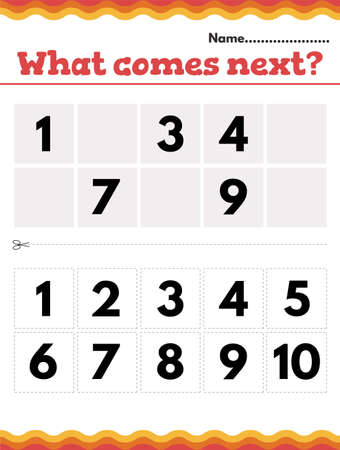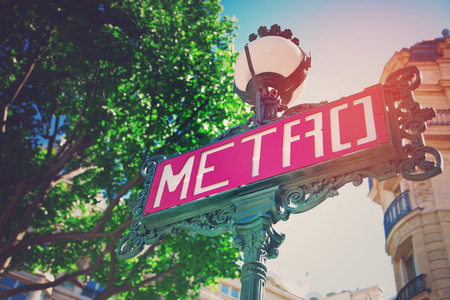Setting the Scene: Britains Mystical Landscape
When one thinks of Britain’s most iconic landscapes, images of ancient stone circles shrouded in mist and rolling green hills punctuated by mysterious monuments instantly spring to mind. From Stonehenge to Glastonbury Tor, and the enigmatic avenues of Avebury, these legendary sites are more than mere tourist attractions—they are living symbols woven into the British psyche. Their enduring presence continues to ignite collective imagination, creating a unique backdrop for spiritual practices both old and new. In fact, these ancient places have cultivated a subtle yet profound connection with the tarot tradition as it is embraced on today’s High Streets. While tarot cards may have their origins elsewhere in Europe, the mystical atmosphere that permeates Britain’s landscape provides fertile ground for their modern interpretations. The ritualistic echoes of druids at Stonehenge or tales of Avalon linked to Glastonbury imbue daily tarot readings with an added layer of British mystique. This interplay between land, legend, and divination infuses every shuffle of the deck with centuries of spiritual curiosity and cultural resonance, making your everyday tarot practice not just a personal journey but also an exploration of Britain’s rich historical tapestry.
2. Druids, Folklore, and the Roots of British Divination
When we trace the lineage of tarot within Britain, it’s impossible to overlook the mystique of Druidic wisdom and the vibrant tapestry of local folklore that predates even the earliest tarot decks. The ancient Druids—those enigmatic priest-philosophers who gathered at sacred sites like Stonehenge—were deeply attuned to the cycles of nature, reading omens in oak leaves, mistletoe, and shifting skies. Their practices, steeped in reverence for the land and its rhythms, laid a spiritual foundation for later forms of British divination.
British folklore is equally rich with stories of cunning folk and wise women using charms, runes, and scrying bowls to divine the future or heal the sick. These early practitioners were often woven into village life, offering guidance from their blend of ancestral knowledge and intuition. Such traditions fostered an openness to mystical tools—making Britain fertile ground for tarot when it arrived from continental Europe centuries later.
Let’s map out how these influences intersected:
Tradition |
Divinatory Practice |
Influence on Tarot Use |
|---|---|---|
| Druidism | Ogham sticks, nature omens, lunar cycles | Focus on symbolism, respect for natural rhythms in card readings |
| Folklore (Cunning Folk) | Scrying bowls, charm casting, dream interpretation | Integration of personal intuition and storytelling into tarot spreads |
| Medieval Mysticism | Astrology, alchemy, numerology | Layering esoteric systems onto tarot interpretations |
This confluence of native traditions meant that by the time tarot cards found their way onto British soil—perhaps initially as a parlour amusement—they were soon embraced as another thread in a much older fabric. Today, whether you’re drawing cards over a cuppa or consulting them amidst city bustle, you’re partaking in a heritage that stretches from ancient groves right up to your local high street.

3. Victorian Occultism and the Tarot Revival
If you’ve ever wondered why tarot feels so at home in British culture, look no further than the smoky parlours and candlelit drawing rooms of Victorian England. The nineteenth century marked a seismic shift in how Britons engaged with the mysterious and unseen. With Queen Victoria’s reign came a burgeoning interest in mysticism, spiritualism, and the occult, all blending seamlessly into the fabric of daily life—both genteel and gritty.
While Stonehenge connects us to ancient rites, it was the Victorians who dusted off the tarot deck and gave it a new life on British soil. The era’s obsession with secret societies—the Hermetic Order of the Golden Dawn being a prime example—offered fertile ground for esoteric exploration. Intellectuals, artists, and even members of the aristocracy gathered to decode hidden knowledge, not only for entertainment but as a genuine quest for meaning in an age of rapid social change.
The tarot became more than just a parlour game; it transformed into a tool for self-inquiry, guided meditation, and even rebellion against rigid social norms. Publications such as A.E. Waite’s works and Pamela Colman Smith’s iconic illustrations reimagined the cards with symbolism that still resonates today. Their collaborative Rider-Waite-Smith deck, born out of this cultural cauldron, is now as familiar on British high streets as tea shops or bookstalls.
What does this mean for your daily tarot practice? Quite a lot, actually. Every time you shuffle your deck in a London flat or consult the cards in a Yorkshire café, you’re participating in a tradition revitalised by Victorian curiosity and creativity. The symbols you interpret are layered with meanings shaped by centuries of British fascination with mystery—from Arthurian legends to séances beneath gas-lit chandeliers.
This Victorian legacy invites modern practitioners to embrace both structure and spontaneity in their readings. It encourages us to blend rational thought with intuitive insight—a duality that feels quintessentially British. So next time you lay out your cards, remember: you’re not just reading fortunes; you’re engaging with a living tradition shaped by secret societies, scholarly debates, and an enduring national appetite for magic.
4. From High Street to Hearth: Tarot in Contemporary British Culture
If you stroll along a bustling high street in London or duck into a snug café up north, you might be surprised at how seamlessly tarot has woven itself into the fabric of modern British life. No longer just the reserve of mystics or niche subcultures, tarot is now a fixture from Shoreditch’s trendiest boutiques to living rooms in Leeds and beyond. This fusion of ancient symbolism and contemporary sensibility reflects a uniquely British approach—equal parts reverence for tradition and an irrepressible appetite for reinvention.
Tarot Across Britain: Everyday Integration
Modern Britons engage with tarot in ways that feel both personal and communal. Young professionals may pop into a Soho boutique for a lunchtime reading, while families gather on Sunday afternoons for informal card pulls over cups of tea. Tarot apps are downloaded alongside mindfulness podcasts, and local bookshops host monthly tarot circles where strangers become friends. The practice has shifted from something hidden behind velvet curtains to an accessible tool for reflection and connection—whether you’re navigating career crossroads or seeking solace during uncertain times.
Where Tarot Meets Daily Life
| Setting | How Tarot Is Used | Distinctive British Touch |
|---|---|---|
| High Street Boutiques | Quick readings before work or nights out; pop-up tarot events during fashion launches | Pairings with artisan coffee; collaborations with local artists |
| Cosy Living Rooms | Family card pulls, personal reflection rituals, group readings at gatherings | Accompanied by tea and biscuits; often set to the backdrop of classic British telly |
| Community Bookshops & Cafés | Monthly tarot circles, book-club style discussions about archetypes and symbolism | Integration with poetry nights and open-mic storytelling sessions |
| Digital Spaces (Apps & Forums) | Daily card draws, sharing spreads online, remote group readings via Zoom | Banter-laden WhatsApp groups; tongue-in-cheek memes referencing the Queen or British weather |
The Modern British Tarot Mindset
This everyday presence of tarot is not just about fortune-telling—it’s about fostering introspection, building community, and finding moments of magic amidst the ordinary. Whether youre in Brighton or Belfast, tarot acts as both mirror and compass. It honours the centuries-old mysteries that have shaped Britain’s spiritual heritage while adapting to today’s fast-paced, multicultural society. In this way, the practice continues its journey from ancient stone circles to the heart of British homes and high streets alike.
5. Local Influence: Regional Symbolism and British Decks
British tarot decks are much more than mere divinatory tools—they’re living galleries of local culture, artistry, and history. If you’ve ever shuffled a pack designed in the UK, you might notice motifs that feel uniquely British: think misty moors, Tudor roses, Celtic knots, or even the stoic gaze of a fox beneath an ancient yew tree. These details aren’t just decorative; they serve as gateways to deeper layers of meaning rooted in the British landscape and psyche.
Distinctive Imagery: From Arthurian Legends to London Streets
British-designed tarot decks often draw from the country’s rich storytelling traditions. For example, The Wildwood Tarot channels the mythic forests of pre-Roman Britain, while The DruidCraft Tarot leans into Celtic lore with its earthy palette and pagan symbolism. You might also find more contemporary nods—a red double-decker bus in a modern urban deck or references to British pop culture tucked amongst the archetypes. These visual cues connect your daily readings directly to the spirit and history of Britain itself.
Local Artistry: Craftsmanship That Tells a Story
The artistry behind British tarot decks is often steeped in heritage techniques—watercolours reminiscent of Turner’s landscapes, pen-and-ink sketches echoing Beatrix Potter, or bold linocuts inspired by the Arts and Crafts movement. Many creators collaborate with local artisans or draw inspiration from regional folklore, ensuring each card tells its own story within a wider tapestry. This lends British tarot decks an authenticity that resonates globally but remains unmistakably local.
Global Impact: What Sets British Decks Apart?
In a world awash with mass-produced tarot cards, what truly sets British decks apart is their grounded sense of place and identity. They bridge ancient wisdom and contemporary life—inviting you to explore not only universal truths but also the quirky charm of British eccentricity and resilience. Whether you’re reading beneath grey northern skies or sipping tea on a bustling high street, these decks remind us that tarot is both timeless and rooted in the soil beneath our feet.
6. British Wit, Tea, and Tarot: The Everyday Ritual
When you think of daily life in Britain, a few things immediately spring to mind: a perfectly brewed cup of tea, a quick-witted remark, and a quiet moment by the window as rain patters on the glass. These quintessentially British rituals don’t just colour the nation’s culture—they infuse our spiritual practices too, including tarot.
The Comfort of Tea and Cards
There’s an almost sacred element to making a proper cup of tea before settling down for a tarot reading. This isn’t just about routine; it’s about creating an atmosphere where reflection feels safe and familiar. The gentle clink of china, the curl of steam—these simple acts ground us in the present, setting the stage for honest self-exploration. In many British homes, pulling out your favourite mug is as important as shuffling the deck itself.
Infusing Readings with British Humour
If there’s one thing Brits are known for, it’s their dry sense of humour—even when delving into matters of fate and fortune. Tarot readings here often come peppered with playful banter and wry observations. Rather than taking every card at face value, there’s room for irony and lightness: “Ah, the Tower again—must be Tuesday!” This approach transforms tarot from solemn ritual to something more accessible and less intimidating.
A Distinctively British Blend
Blending tea rituals and sharp wit into tarot practice creates space for both sincerity and levity—a balance that keeps spiritual reflection grounded and enjoyable. It’s not about dismissing the cards’ wisdom but rather embracing them with a uniquely British flavour: thoughtful yet never too earnest, introspective but never dour. From Stonehenge’s ancient mysteries to today’s bustling high streets, this everyday fusion reminds us that spirituality thrives when woven into the fabric of daily life—with a splash of milk and a knowing smile.


